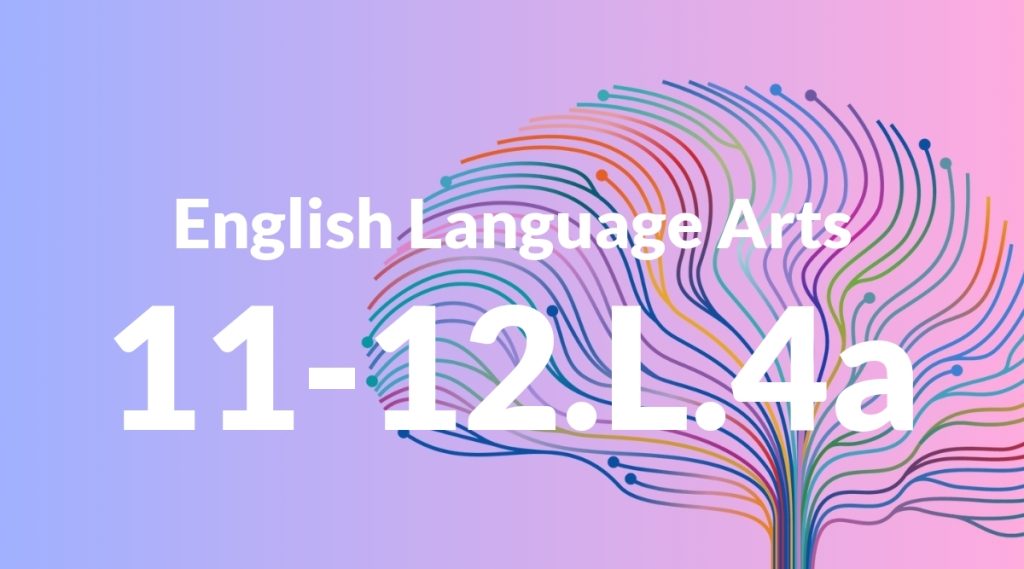Standard: 11-12.L.4 – Determine or clarify the meaning of unknown and multiple-meaning words and phrases based on grades 11-12 reading and content, choosing flexibly from a range of strategies.
Grade level: Grade 11-12
Subject: English Language Arts
Domain: Language
Teacher Overview
This standard emphasizes the importance of understanding and interpreting complex vocabulary, critical for advanced reading and content comprehension in grades 11-12. Mastery of this standard equips students with the ability to navigate and understand sophisticated texts, a crucial skill for academic success and lifelong learning. Students should have foundational skills in basic vocabulary strategies and be comfortable using reference materials like dictionaries and thesauruses.
Students will be able to interpret and understand complex texts across various genres, enhancing their overall reading comprehension and analytical abilities.
Common Misconception 1
A common misconception is that the first dictionary definition is always the correct one. This is incorrect because words often have multiple meanings, and the appropriate meaning depends on the context in which the word is used.
Intervention 1
To address this misconception, encourage students to consider the context and review multiple dictionary definitions to determine the most relevant meaning.
Common Misconception 2
Another misconception is that context clues are always obvious and easy to identify. This is not true, as context clues can be subtle and require careful analysis to understand the intended meaning of a word.
Intervention 2
Provide students with varied practice in identifying and using context clues in different types of texts to develop their skills in this area.
Prerequisite Knowledge
Students should have a strong grasp of basic vocabulary strategies, such as using context clues, understanding word roots, and familiarity with using dictionaries and thesauruses.
Subsequent Knowledge
After mastering this standard, students will develop advanced skills in nuanced reading and interpretation, allowing them to engage with complex texts and diverse genres more effectively.
Instructional Activities
- Context Clue Scavenger Hunt: Students find and interpret context clues in a given text.
- Word Roots and Affixes Workshop: Exploring the origins and components of words.
- Dictionary Duel: A game where students compete to find the most accurate word meanings using dictionaries.
- Group Discussions: Analyzing multiple-meaning words in literature and discussing their implications.




